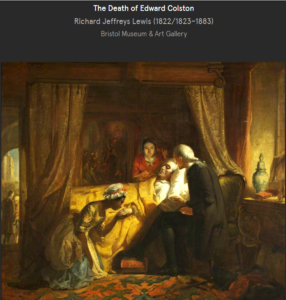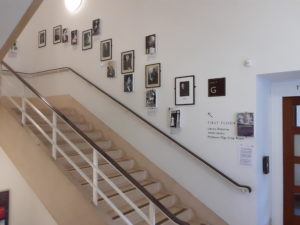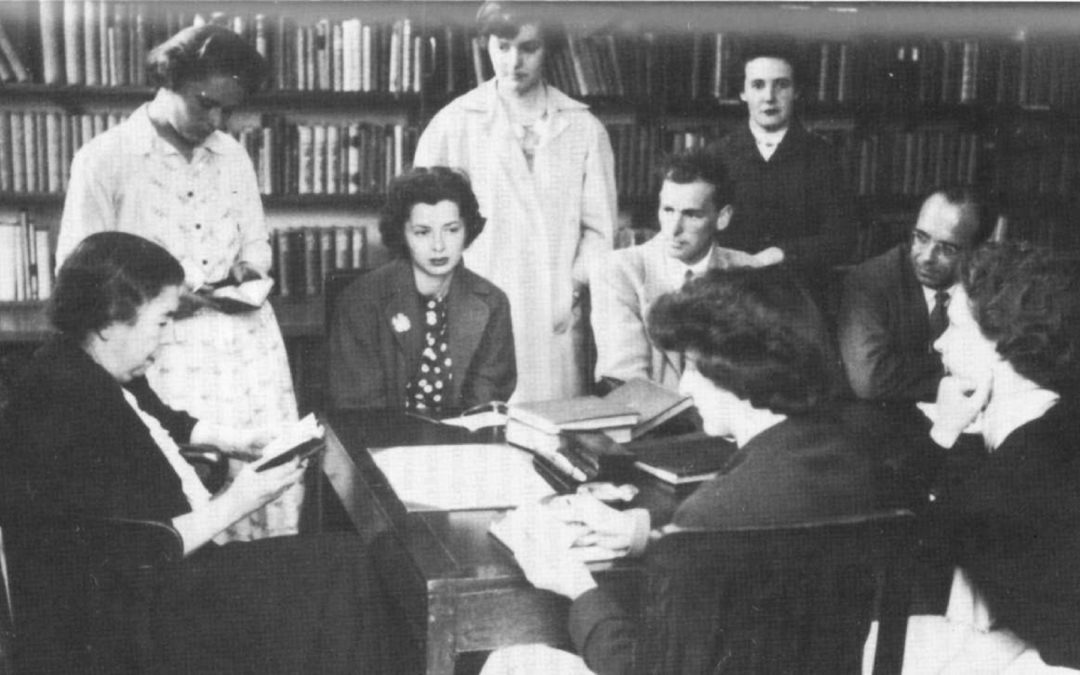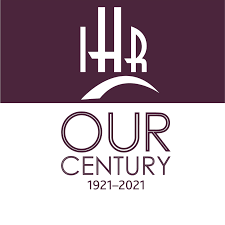By Mark McCarthy
Through the months of lockdown, our Student Group Zoom meetings often discussed how historical research intersects with contemporary life. A broad historical ‘turn’, the rethinking of our European colonial heritage, was foregrounded in June 2020 when the statue of Edward Colston was toppled into Bristol harbour. Colston was born and buried in Bristol and left much of his fortune to that city – money he had gained in London as a merchant within the Royal African Company and from trade through ports that included Bristol. Local history made national news.
My own local research in Camden Town benefitted from the ‘Legacies of British Slavery’ database, revealing street names that have associations both with merchants and with abolitionists of the slave trade. I also found that a young artist from Camden Town, Richard Jeffreys Lewis, painted ‘The Death of Edward Colston’ in 1845, at a time when Colston’s cadaver was exhumed during renovation of the Bristol church where he had been buried. Lewis’ forgotten picture was recovered from the storeroom depths of Bristol Museum for a ground-breaking exhibition on the slave trade in 1999. The exhibition’s curator, Madge Dresser, used the picture as the front cover for her social history book. There is a challenge in interpreting the pose of the black female servant kissing the dying master’s hand.

For the IHR Centenary, we’ve been reflecting on our predecessors’ PhD and MA theses. What subjects did they choose, how did they approach them and what current interests did they demonstrate? I looked at a sub-set of the ~300 total, those relating to the British Empire up to 1960. Six were of the Caribbean and South America, seven were of Africa and seven of India. A majority drew upon British government records or organisational archives such as missionary societies. Only one investigated local perspectives – a pre-Independence study of Bengal by B.C Battacharya which linked nineteenth century western political thought (‘the ideas of Mill and the emotions of Mazzini’) with Indian (Hindu) culture and history. And only this thesis took a critical stance.
Over its century, the IHR has been very much a part of the British colonial perspective. It was deliberately sited within the capital’s university and claimed exceptional access to national political and cultural sources. Students came to study with historians who drew from, and created, British historical thought. The IHR provided access to government records which enabled students to investigate histories of non-British countries, in English, and provided an ideological framework of ‘normal’ British colonial practice. Researchers were working with the ‘official view’ and afterwards, with this ‘trained mind’, could continue the legacy as teachers and cultural leaders of the Empire.
There is active debate on how British Empire history should be presented in public settings, including what to do with the statue of Colston. After the fall of the communist regimes in Eastern European countries, we became used to seeing foreign statues being overturned – Stalin most frequently – with general British cultural approval. In the last five years, the photographic gallery of fame on the staircase within the IHR has shown a steady transformation, with women’s portraits joining (topling?) those of their male colleagues. This celebrates unremembered excellence but it cannot demonstrate the differences of approach and insight that these historians brought. Did they hold to the ‘official view’ or were they contrarians in their times?

Decolonisation – the changing political relationship with other peoples, and their internal perspectives – was not in the curriculum of the 2017-18 MRes course. With no recommendations from a reading list to draw on, our study group turned to a quite short book by an American professor, Dane Kennedy – ‘The Imperial History Wars’. He describes historiographical debates about the British Empire and postcolonial studies, explains the field of subaltern studies and underlines the importance of Edward Said’s book ‘Orientalism’. These texts wrest history away from the Empire’s perceptions and place it in the hands – and formulations – of other cultures and people.
Toppling Colston has brought forward questions for a range of British values. In its second century, the IHR could choose a stance which is more distant from the British establishment and actively seek out and celebrate new voices, critics and oppositions. Beyond revising our histories of other cultures, our new decolonised history can relook at our own culture and historical practice. If we understand how others see us, we may better understand ourselves.
References
C Bhattacharya, Development of social and political ideas in Bengal 1858-1885 (PhD Thesis, 1937)
Madge Dresser, Slavery obscured: the social history of the slave trade in Bristol (Bristol, Redcliffe, 2007)
Dane Kennedy, The Imperial History Wars (Bloomsbury 2018)
Legacies of British Slavery (database), https://www.ucl.ac.uk/lbs/project/details/
Mark McCarthy, The slave trade and emancipation recalled by the street names in Camden Town, London NW1, London and Middlesex Archaeological Society Transactions, 71 (2020), 351-362
This blog is part of the IHR centenary project, From Jazz to Digital: exploring the student contribution at the IHR, 1921-2021.


